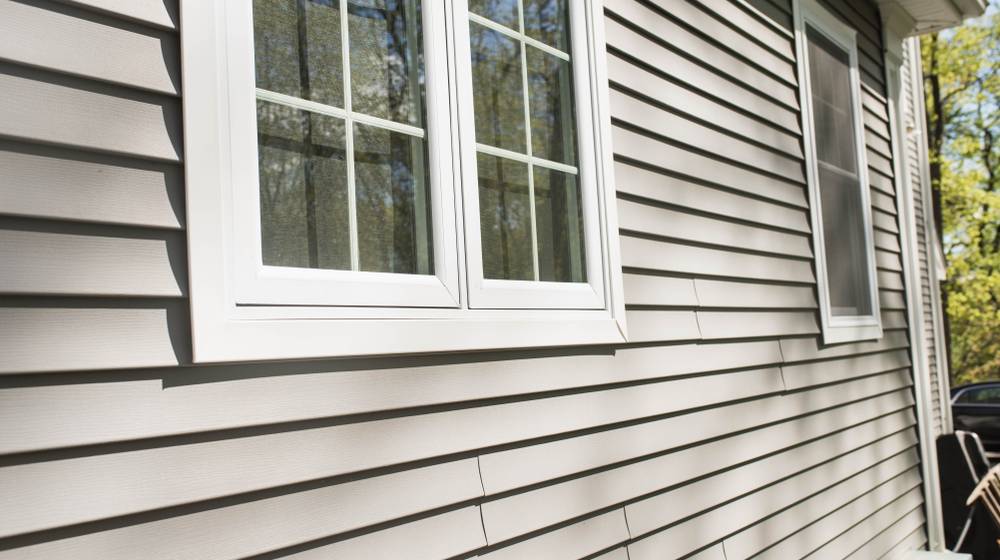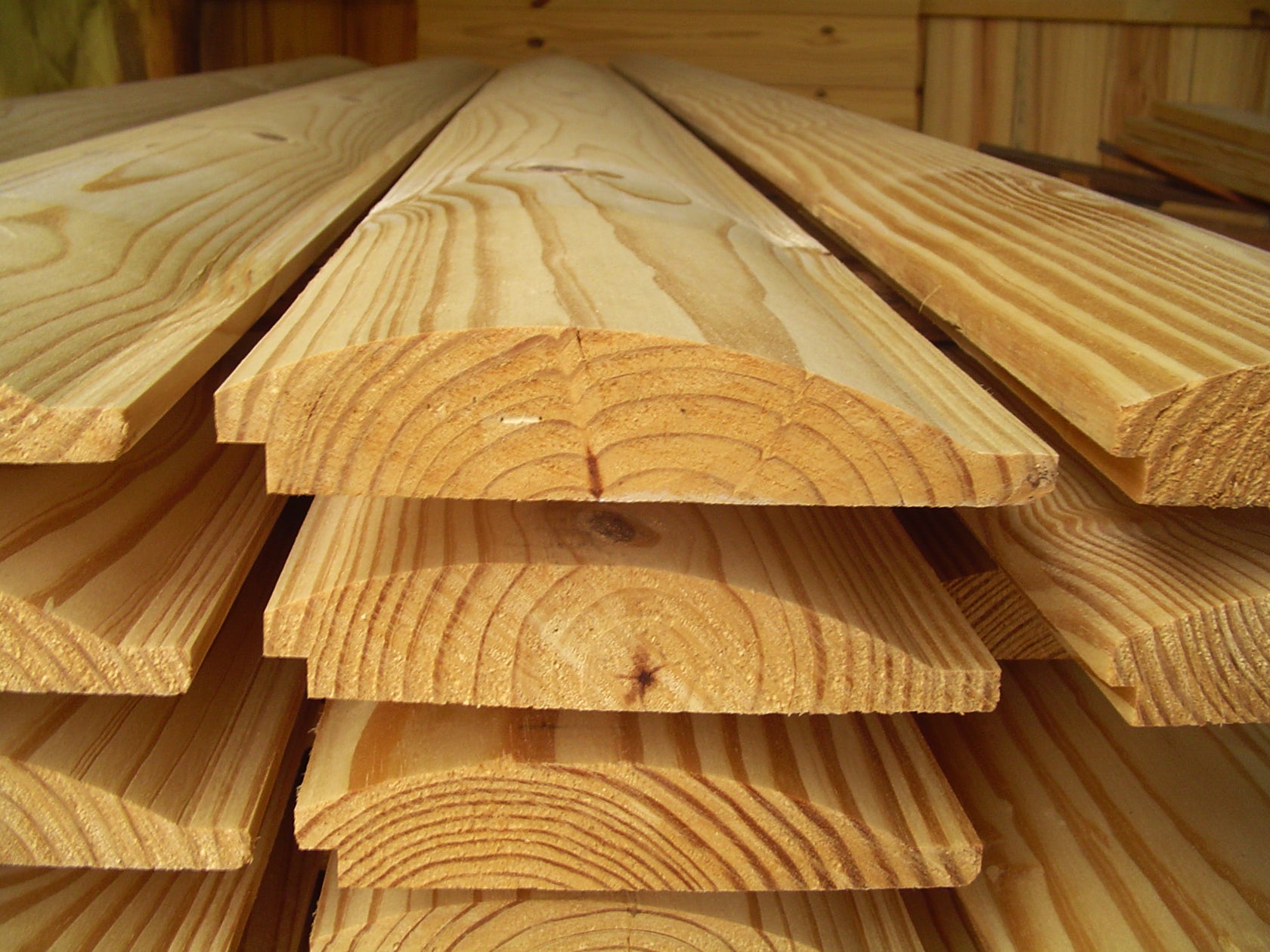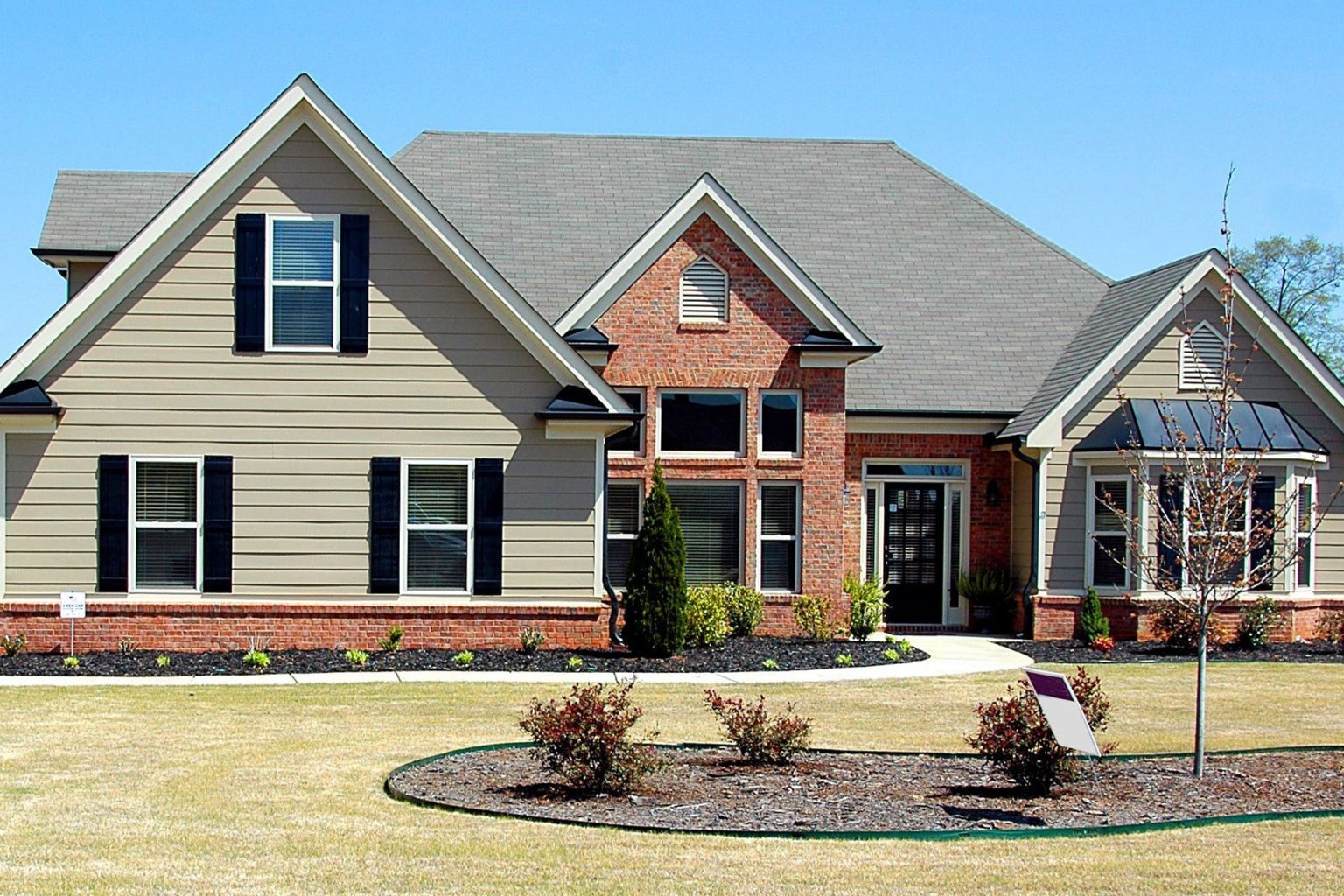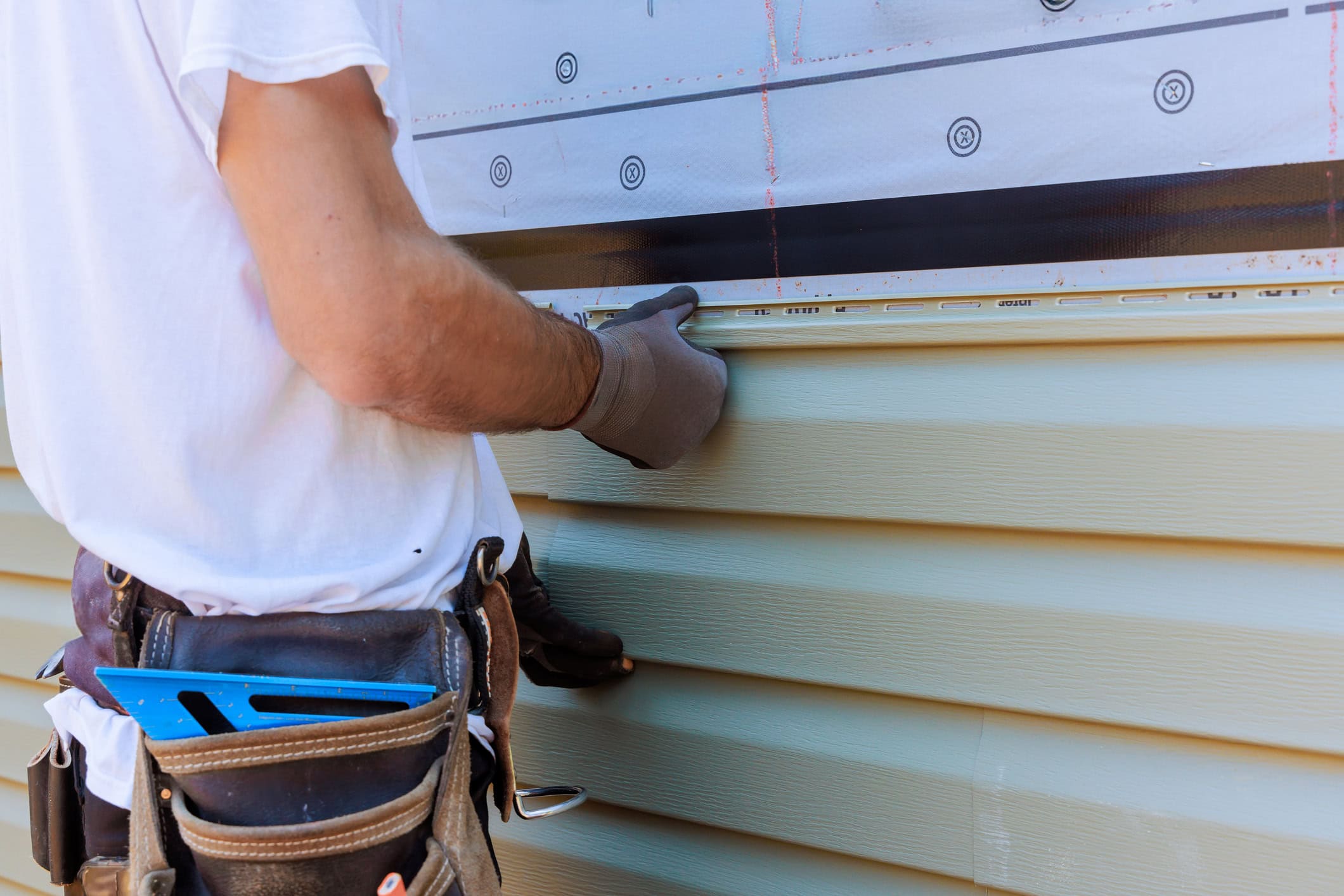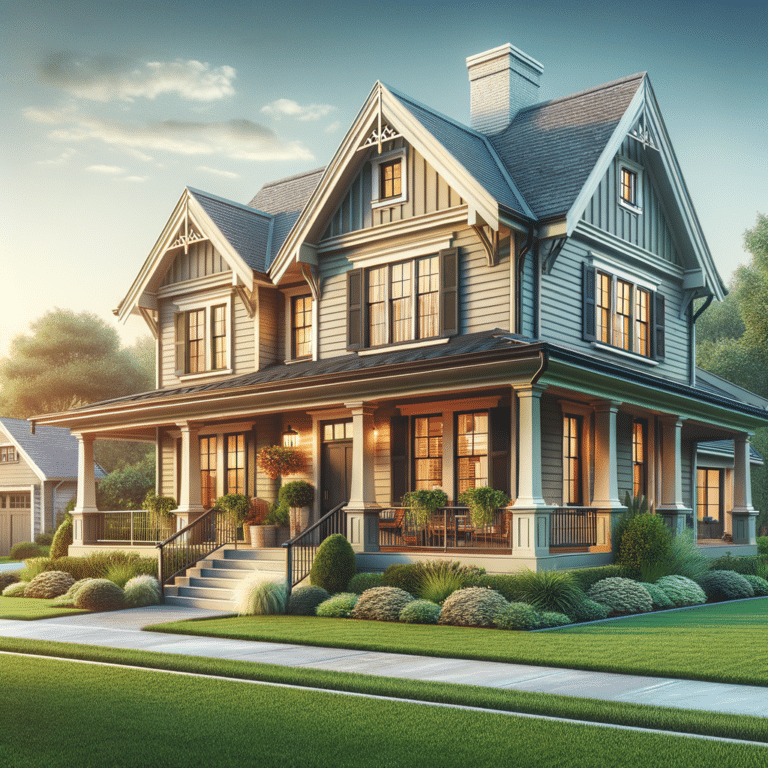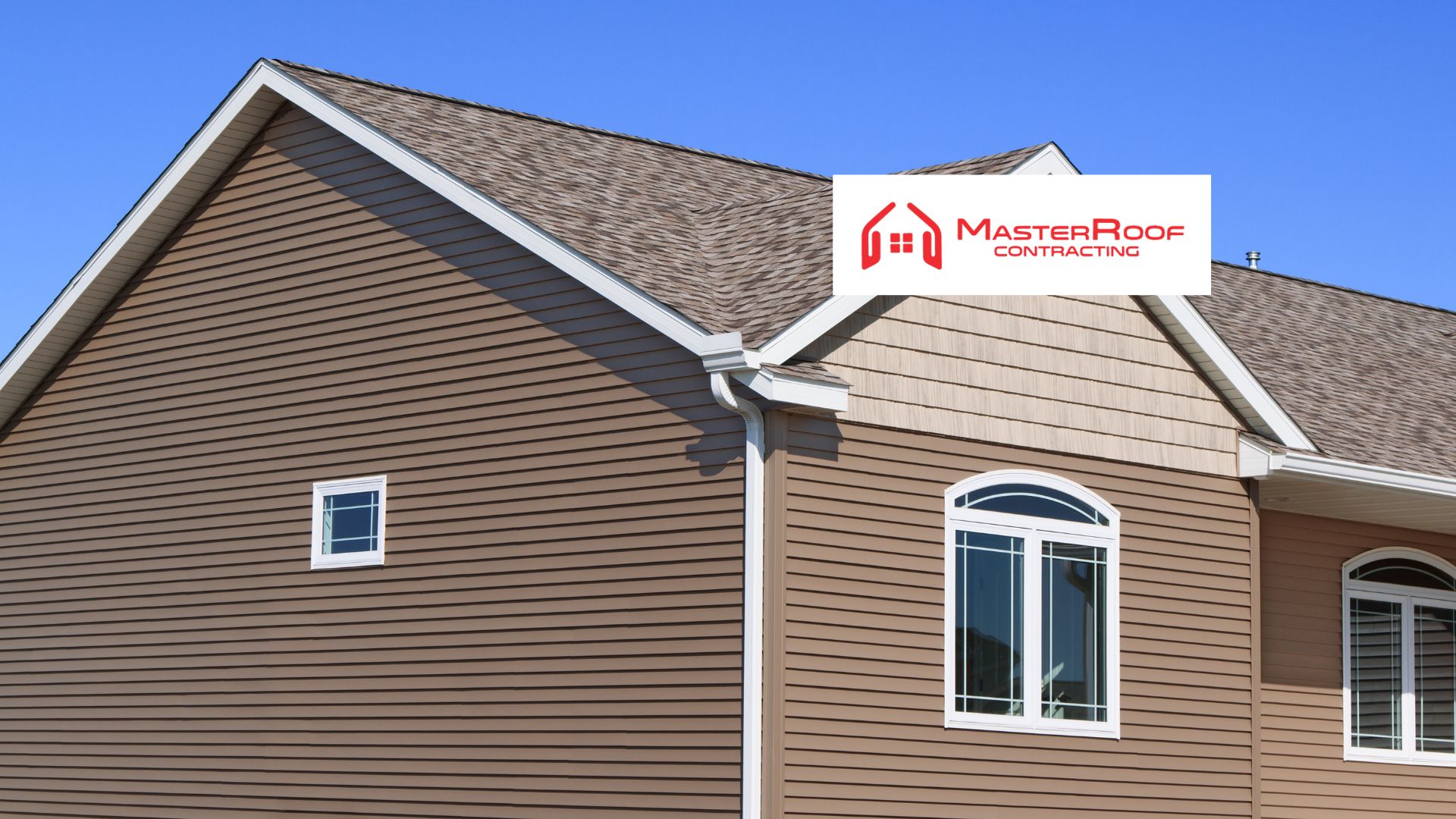Aluminum Siding: A Comprehensive Guide
Aluminum siding offers a durable and low-maintenance exterior cladding option for homes. Its popularity stems from its resistance to rot, insect damage, and fire, characteristics that significantly contribute to its long lifespan. This guide delves into the multifaceted aspects of aluminum siding, from material properties and installation processes to maintenance, environmental impact, and design aesthetics. We will explore the various styles, costs, and safety considerations associated with this popular siding choice, providing you with a comprehensive understanding to help you make informed decisions.
We will examine the manufacturing process, exploring the chemical composition that underpins its durability. A comparison with other siding materials like vinyl and wood will highlight its unique advantages and disadvantages. Furthermore, we will cover the installation process, associated costs, and essential maintenance practices to ensure the longevity of your aluminum siding investment. Finally, we will consider the environmental implications of aluminum siding production and disposal, emphasizing its recyclability and energy efficiency benefits.
Aluminum Siding
Aluminum siding is a popular exterior cladding choice for its durability, low maintenance, and relatively affordable price. It’s a versatile material suitable for a range of architectural styles and climates. This section details the material properties, manufacturing process, and lifespan of aluminum siding, comparing it to other common cladding options.
Aluminum Siding Manufacturing
Aluminum siding is manufactured through a series of processes starting with aluminum coils. These coils, typically made from alloys designed for exterior applications, are fed into a roll-forming machine. This machine shapes the aluminum into the desired profile – be it clapboard, shingle, or panel – using a series of rollers. The formed siding then undergoes a cleaning process to remove any imperfections or manufacturing residue. Finally, a protective coating, usually paint, is applied to enhance durability and aesthetics. This coating is baked onto the aluminum at high temperatures to ensure adhesion and longevity. Different finishes are achieved by varying the paint type and application techniques.
Chemical Composition and Durability
The chemical composition of aluminum siding significantly influences its durability. Common aluminum alloys used include 3003 and 5005 series, known for their corrosion resistance and strength. The addition of elements like magnesium and manganese enhances the alloy’s strength and workability, while the inherent properties of aluminum provide excellent resistance to rust and decay. This inherent resistance contributes to the long lifespan of aluminum siding, exceeding that of many other materials.
Lifespan Comparison
Aluminum siding generally boasts a lifespan of 40 to 50 years, sometimes even longer with proper maintenance. This contrasts with vinyl siding, which typically lasts 20 to 30 years, and wood siding, which may require significant maintenance and replacement after 15 to 25 years, depending on climate and maintenance. The longevity of aluminum siding stems from its resistance to rot, insect infestation, and fire.
Aluminum Siding Finishes and Maintenance
A wide variety of finishes are available for aluminum siding, including various colors, textures, and patterns. These finishes are crucial for both aesthetics and protection. Common finishes include powder coating, which offers excellent durability and chip resistance, and Kynar 500 paint, known for its exceptional UV resistance and color retention. Maintenance for aluminum siding is relatively low. Regular cleaning with soap and water is typically sufficient to remove dirt and debris. Occasional inspections for damage and prompt repairs are recommended to maintain the siding’s integrity and lifespan.
Aluminum Siding: Pros and Cons
| Material | Lifespan (Years) | Maintenance | Cost |
|---|---|---|---|
| Aluminum | 40-50+ | Low; occasional cleaning and inspection | Moderate to High (depending on finish and features) |
| Vinyl | 20-30 | Low; occasional cleaning | Low to Moderate |
| Wood | 15-25 (with maintenance) | High; regular painting, staining, and repair | Moderate to High |
Aluminum Siding Installation and Costs
Aluminum siding offers a durable and relatively low-maintenance exterior cladding option for homes. Its installation, however, requires specific tools and techniques to ensure a long-lasting, aesthetically pleasing result. Understanding the process and associated costs is crucial for homeowners undertaking this project.
Aluminum Siding Installation: A Step-by-Step Guide
Proper installation is key to the longevity and effectiveness of aluminum siding. This process generally involves several key stages, each requiring precision and attention to detail. Failure to follow these steps properly can lead to issues such as leaks, damage, and an unattractive final appearance.
- Preparation: This crucial first step involves measuring the house’s exterior, ordering the necessary siding panels and accessories (such as J-channels, starter strips, and trim), and preparing the existing wall surface. This might include removing old siding, repairing any damaged sheathing, and ensuring a clean and level surface for the new siding.
- Installation of Flashing and Water Barriers: Before applying the siding, install flashing around windows, doors, and other areas prone to water penetration. A water-resistant barrier should also be applied to the exterior wall to prevent moisture damage.
- Installing the Starter Strip: The starter strip forms the base for the first row of siding. It’s essential to ensure this is level and properly aligned to maintain the overall straightness of the siding.
- Applying the Siding Panels: Siding panels are typically overlapped and fastened to the wall using nails or screws. It’s crucial to maintain consistent spacing and alignment between panels for a professional finish.
- Installing Trim and Accessories: J-channels, corner posts, and other trim pieces are installed to complete the look and provide a finished edge. These pieces require precise measurement and installation for a neat and professional appearance.
- Final Inspection: A thorough inspection is essential to ensure all panels are securely fastened, aligned correctly, and that there are no gaps or leaks.
Tools and Equipment Required for Professional Aluminum Siding Installation
The successful installation of aluminum siding necessitates the use of specialized tools and equipment. Having the right tools readily available significantly enhances efficiency and accuracy, leading to a superior outcome. Improper tools can lead to damage or delays.
- Measuring tape
- Level
- Circular saw or chop saw
- Hammer or nail gun
- Drill with various drill bits
- Screwdriver (various types)
- Tin snips
- Safety glasses and gloves
- Ladder (appropriate height and stability)
- Caulk gun
Cost Breakdown of Aluminum Siding Installation
The cost of aluminum siding installation varies significantly based on factors such as house size, siding quality, labor costs in the region, and the complexity of the project (e.g., the presence of numerous windows, dormers, or intricate architectural details).
Material Costs: Aluminum siding typically ranges from $2 to $8 per square foot, depending on the style, thickness, and finish. Accessories such as trim, flashing, and fasteners add to this cost.
Labor Costs: Labor costs constitute a significant portion of the total expense. Labor rates vary widely geographically, but typically range from $3 to $8 per square foot. This includes the cost of experienced installers and their time.
Total Costs: For a typical 1500 square foot house, a reasonable estimate for aluminum siding installation might range from $7,500 to $24,000 or more, encompassing both materials and labor. This wide range reflects the variability in material choices and regional labor costs.
Comparison of Aluminum Siding Installation with Other Siding Types
Aluminum siding installation differs from other siding types in several aspects. Vinyl siding, for instance, is generally easier and faster to install, requiring fewer specialized tools. Wood siding demands more intricate carpentry skills and is more labor-intensive. Fiber cement siding requires more careful handling due to its weight and fragility. Aluminum siding, while requiring specific tools, offers a balance between durability, relatively straightforward installation, and lower maintenance compared to wood.
Sample Budget for Aluminum Siding Installation
| Item | Cost |
|---|---|
| Aluminum Siding (materials) | $6,000 |
| Trim and Accessories | $1,000 |
| Labor | $7,000 |
| Permits and Inspections | $500 |
| Total Estimated Cost | $14,500 |
Note: This is a sample budget and actual costs may vary depending on location, house size, and specific project requirements. Always obtain multiple quotes from reputable contractors before committing to a project.
Aluminum Siding
Aluminum siding, while durable and low-maintenance, is not impervious to problems. Understanding common issues and implementing proper maintenance practices will significantly extend its lifespan and maintain its aesthetic appeal. This section details common problems, cleaning methods, repair techniques, repainting procedures, and a maintenance checklist.
Common Problems with Aluminum Siding
Aluminum siding, despite its robustness, can experience several issues over time. These typically stem from exposure to the elements, accidental damage, or improper installation. Common problems include dents and scratches from impacts, fading and discoloration from sun exposure, and the accumulation of dirt, mildew, and algae. Less frequently, but still possible, is corrosion in areas where the protective coating has been compromised. These issues, while sometimes cosmetic, can detract from the home’s appearance and, if left unaddressed, potentially lead to more significant problems.
Cleaning and Maintaining Aluminum Siding
Regular cleaning is crucial for maintaining the appearance and longevity of aluminum siding. A simple solution of mild dish soap and water, applied with a soft-bristled brush or sponge, is often sufficient for removing dirt and grime. For more stubborn stains, a pressure washer can be effective, but care must be taken to avoid damaging the siding by using too high a pressure or holding the nozzle too close. Always rinse thoroughly with clean water after cleaning. For mildew or algae growth, a solution of bleach and water (following manufacturer instructions carefully) can be used, but protective gear, such as gloves and eye protection, should be worn. After cleaning with bleach, a thorough rinsing is essential.
Repairing Dents and Scratches in Aluminum Siding
Minor dents and scratches can often be repaired using a putty knife and automotive body filler designed for aluminum. The affected area should be cleaned thoroughly before applying the filler, and the filler should be allowed to dry completely before sanding smooth. After sanding, the repaired area should be primed and painted to match the existing siding color. For more significant damage, replacement panels may be necessary. This often involves removing the damaged panel and installing a new one, ensuring proper alignment and fastening.
Repainting Aluminum Siding
Aluminum siding can fade over time due to sun exposure. Repainting can restore its original appearance and protect it from further weathering. Before repainting, the siding should be thoroughly cleaned to remove dirt, mildew, and loose paint. Any damaged areas should be repaired as described above. A high-quality exterior-grade paint designed for aluminum siding is crucial. Applying multiple thin coats is generally better than one thick coat to ensure even coverage and prevent drips. Allow each coat to dry completely before applying the next. Following the paint manufacturer’s instructions is essential for optimal results and longevity.
Aluminum Siding Maintenance Checklist
Regular maintenance is key to preserving the beauty and longevity of your aluminum siding. A simple checklist can help ensure all necessary tasks are performed.
- Inspect siding for dents, scratches, or damage at least twice a year (spring and fall).
- Clean siding with mild soap and water at least once a year, more frequently if needed.
- Address mildew or algae growth promptly using appropriate cleaning solutions.
- Repair any minor dents or scratches as soon as possible to prevent further damage.
- Repaint faded or damaged areas as needed to maintain the siding’s appearance and protection.
- Check for any signs of corrosion and address any issues immediately.
Aluminum Siding
Aluminum siding offers a durable and relatively low-maintenance exterior cladding option for homes. However, understanding its environmental impact is crucial for making informed decisions about its use. This section will examine the lifecycle environmental considerations of aluminum siding, from production to disposal.
Aluminum Siding Production and Environmental Impact
The production of aluminum is energy-intensive, requiring significant amounts of electricity to extract aluminum from bauxite ore through the Hall-Héroult process. This process also generates greenhouse gas emissions, primarily carbon dioxide and fluorinated gases. The transportation of raw materials and finished products contributes further to the overall carbon footprint. Furthermore, bauxite mining can lead to habitat destruction and water pollution. The scale of these impacts varies depending on the specific mining and manufacturing processes employed and the source of electricity used. For example, hydropower-based aluminum production has a significantly lower carbon footprint than that reliant on fossil fuels.
Recyclability of Aluminum Siding Compared to Other Materials
Aluminum is highly recyclable, with a significantly lower environmental impact compared to the production of new aluminum. Unlike vinyl siding, which often ends up in landfills, aluminum siding can be repeatedly recycled without significant loss of quality. This makes it a more sustainable choice in the long run. The recycling process for aluminum siding involves melting down the scrap material and re-casting it into new products. This contrasts sharply with materials like wood, which while biodegradable, may require significant deforestation, and fiber cement, which has a more complex and less efficient recycling process.
Energy Efficiency of Homes with Aluminum Siding
Aluminum siding’s impact on a home’s energy efficiency is a complex issue. While aluminum itself is a good conductor of heat, properly installed aluminum siding with adequate insulation behind it can contribute to a home’s overall energy efficiency. The reflective properties of aluminum can also help reduce heat absorption during the summer months, potentially lowering cooling costs. However, the effectiveness depends heavily on factors such as insulation levels, window efficiency, and overall building design. A poorly insulated home with aluminum siding will not necessarily be more energy-efficient than a well-insulated home with a different type of siding.
Use of Recycled Aluminum in Siding Manufacturing
Many aluminum siding manufacturers utilize recycled aluminum in their production processes. The percentage of recycled aluminum varies depending on the manufacturer and the specific product. Using recycled aluminum significantly reduces the environmental impact compared to using solely virgin aluminum, as it requires less energy and reduces greenhouse gas emissions. The use of post-consumer recycled aluminum—aluminum that has already been used by consumers—is particularly beneficial, diverting waste from landfills and promoting a circular economy.
Environmental Pros and Cons of Aluminum Siding
Before making a decision, consider the following environmental aspects:
- Pros: High recyclability, potential for reduced energy consumption (with proper insulation), use of recycled aluminum content reduces environmental impact compared to virgin aluminum production.
- Cons: Energy-intensive production process, greenhouse gas emissions associated with aluminum production and transportation, potential for bauxite mining impacts (habitat loss, water pollution).
Aluminum Siding
Aluminum siding offers a durable and low-maintenance exterior cladding option for homes. Its versatility in style and color makes it a popular choice for a wide range of architectural designs and homeowner preferences. This section details the various styles, designs, and color options available, along with examples of how different patterns can impact a home’s overall aesthetic.
Aluminum Siding Styles and Designs
Aluminum siding comes in a variety of styles and designs, offering homeowners a wide range of choices to complement their home’s architecture and personal taste. These options go beyond simple flat panels, providing texture and visual interest.
Traditional horizontal lap siding mimics the look of wood clapboard, offering a classic and timeless appeal. This style is characterized by overlapping horizontal panels, creating a clean and straightforward appearance suitable for various architectural styles.
Vertical siding, on the other hand, presents a more modern and sleek look. The vertical orientation of the panels creates a sense of height and can make a home appear taller and more slender. This is particularly effective on homes with a narrow façade.
Shake and shingle siding styles provide a more textured appearance, mimicking the look of natural wood shakes or shingles. These styles often incorporate varied panel lengths and profiles to create a more rustic and visually interesting façade.
Beaded siding features a subtle beading along the edges of each panel, adding a touch of visual interest and depth to the overall appearance. This style offers a classic look, slightly more detailed than traditional lap siding.
Aluminum Siding Color Options
The color palette for aluminum siding is extensive, providing homeowners with numerous choices to match their home’s style and personal preferences. Manufacturers offer a broad range of colors, from classic earth tones to vibrant hues, allowing for a high degree of customization.
Popular color choices often include muted earth tones such as beige, brown, and gray, which blend seamlessly with natural surroundings and offer a timeless appeal. These colors are also known for their ability to withstand the test of time and maintain their appearance.
Brighter colors, such as blues, greens, and reds, offer a more bold and contemporary aesthetic. These choices can make a significant statement and are often used to add personality and vibrancy to a home’s exterior.
White and cream colors provide a classic and clean look, creating a fresh and bright appearance. These neutral colors offer versatility and can easily complement various architectural styles and landscaping elements.
Architectural Styles and Aluminum Siding
Aluminum siding’s adaptability makes it a suitable choice for various architectural styles. The choice of style and color can significantly impact how well the siding complements the home’s overall design.
For example, traditional homes benefit from the classic look of horizontal lap siding in earth tones or muted colors. This creates a cohesive and harmonious appearance that respects the home’s historical context.
Modern homes often pair well with vertical siding or more contemporary patterns and brighter color choices. This creates a clean and sophisticated look that aligns with the home’s modern design elements.
Ranch-style homes can benefit from the textured appearance of shake or shingle siding. These styles can create a visually appealing contrast and add a sense of rustic charm.
Siding Patterns and Overall House Appearance
The pattern of the aluminum siding significantly influences the overall look of a house. Different patterns create different visual effects, affecting the perceived size, shape, and style of the home.
Horizontal lap siding, for instance, creates a sense of width and can make a home appear larger. The continuous horizontal lines draw the eye across the façade.
Vertical siding, conversely, can create a sense of height and make a home appear taller and more slender. The vertical lines draw the eye upwards.
The use of varied panel lengths and profiles, as seen in shake and shingle styles, adds texture and visual interest, creating a more dynamic and less monotonous appearance.
Aluminum Siding
Aluminum siding, while durable and low-maintenance, presents certain safety considerations during installation, maintenance, and disposal. Understanding these hazards and implementing appropriate precautions is crucial for ensuring a safe working environment and minimizing potential risks.
Safety Hazards During Aluminum Siding Installation
Working at heights is inherent in siding installation. Falls from ladders or scaffolding are a significant risk. Sharp edges of aluminum sheets can cause cuts and lacerations. Improper handling of tools, such as power saws and drills, can lead to injuries. Exposure to the elements, such as sun and heat, can cause dehydration and heatstroke. Finally, the weight of aluminum siding sheets can cause strain and musculoskeletal injuries if not handled correctly.
Safety Precautions During Installation and Maintenance
Always use appropriate safety equipment, including safety glasses, work gloves, sturdy footwear, and a hard hat. When working at heights, use a stable and properly secured ladder or scaffolding, ensuring it’s on level ground and exceeding the required height. Wear cut-resistant gloves when handling aluminum sheets. Use caution when operating power tools, following manufacturer instructions and wearing appropriate safety gear. Stay hydrated and take breaks in shaded areas to avoid heat exhaustion. Employ proper lifting techniques to avoid strain. Regularly inspect ladders and scaffolding for damage before use.
Disposal of Old Aluminum Siding
Old aluminum siding should be disposed of responsibly. Many recycling centers accept aluminum siding, reducing landfill waste and conserving resources. Check with your local waste management authority for recycling options. If recycling is not feasible, dispose of the siding according to local regulations for construction debris. Avoid burning aluminum siding, as it can release harmful fumes. Properly removing nails and staples before disposal minimizes the risk of injury to handlers.
Potential for Fire Damage with Aluminum Siding
Aluminum siding itself is non-combustible. However, it can melt at high temperatures, potentially exacerbating a fire. The fire’s intensity could cause the aluminum to deform and spread the flames. Moreover, the aluminum siding’s reflective properties could direct intense heat onto nearby combustible materials. Proper fire prevention measures, including a well-maintained electrical system and smoke detectors, are crucial.
Safe Handling of Aluminum Siding Materials
Aluminum siding sheets are relatively lightweight but can still cause injury if mishandled. Always lift with your legs and avoid twisting your body. Use appropriate lifting equipment for larger quantities of siding. Store siding sheets flat and securely to prevent damage and accidental falls. Avoid stacking materials too high to prevent toppling. When transporting aluminum siding, secure it properly to prevent shifting during transit. Always follow manufacturer’s instructions for handling and storage.
Last Point
Ultimately, the decision to choose aluminum siding involves weighing its numerous benefits against potential drawbacks. While its durability and low maintenance are compelling advantages, careful consideration of installation costs, environmental impact, and aesthetic preferences is crucial. This comprehensive guide has aimed to equip you with the necessary information to navigate these considerations and make an informed choice that best suits your needs and budget. Understanding the nuances of aluminum siding, from its initial selection to its eventual replacement, will ensure a successful and long-lasting exterior for your home.
